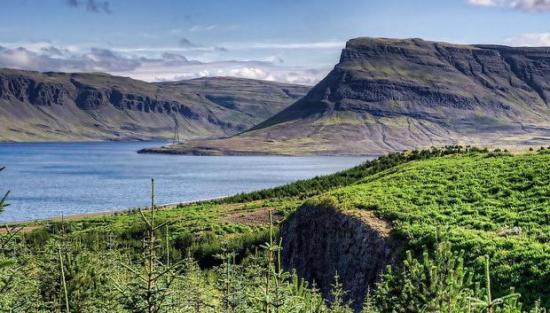Karen Graham
Source - http://www.digitaljournal.com/science/vikings-and-the-little-ice-age-the-end-of-beef-and-beer/article/420409?
While many of the stereotypical myths about Vikings being marauding adventurers have been proven to be just that, myths, there is one truth that is well documented. They knew how to win friends and influence people when they settled in a new land.

This ship was constructed using clinker-built methods, such as the Vikings used, and the completed ship sailed from Europe to America.
An ongoing archaeological dig of a farmstead called Hrísbrúin Mosfell Valley, in southwestern Iceland, led by Dr. Davide Zori, the archeological field director for the Mosfell Archaeological Project in Iceland, has shed some light on the Viking settlement there and how a changing climate may have changed their way of life., putting an end to brewing beer and raising cattle.
The Mosfell Valley site includes a Viking Chief's 100-foot longhouse as well as a great hall where feasts were held. Carbon dating has shown the structures were built between the late 9th century and early 10th century. Further studies show the site was abandoned in the 11th century.

Site of Viking long house in Iceland.
The fascinating part of this story is the way archaeological evidence has been combined with ancient Viking historical texts to give us a picture of thegroup's culture. "These texts read almost like novels," Zori said in a statement. "They talk about daily life. Yes, the Vikings may have put axes to one another's heads, but these accounts also describe milking cows."
It is believed by Zori, who is also an assistant professor at Baylor University, that the Vikings who settled in Iceland felt the need to keep up a "big man on the block" image like they had in Scandinavia. So to accomplish this, and keep up their political ambitions, they hosted large feasts with plenty of beer and beef. "It was somewhat like the barbecue here. You wanted a big steak on the grill," said Zori.
Actually, what they were doing is a good political move in cementing relationships with equals and rivals. And it didn't hurt in spreading good will with laborers and supporters in the region. Of course, the changing climate would play a big role in changing how they lived and farmed.

Iceland may have looked much like it does today when the Viking first started their settlements.,,,Axel Kristinsson from Reykjavík, Iceland
When the Vikings first arrived in Iceland, according to the ancient texts, they found forested lowlands, lush pasture land and sheltered inlets from the sea. Barley seeds found on the earthen floors or refuse piles tell us they consumed the barley while pollen studies show they also grew barley. The grain could have been used for bread or porridge, but the "social value of beer makes it very likely it was used primarily to produce alcohol," Zori said.
Shortly after the group of Vikings arrived in Iceland, the temperatures started dropping. Studies have shown that the cold summers and ice growth began abruptly between AD 1275 and 1300, followed by "a substantial intensification" from 1430 to 1455. This meant that the Vikings endured nine months of very cold winters and three months of weather just a little less cold than the winter months.
The group had to keep their cattle indoors because there wasn't enough grazing grasses. Because they had to grow enough barley for their livestock and families, plus extra to brew beer, the weather put a big damper on feasting. It soon became impractical to keep so many cows, and sheep began to replace them. Sheep are better protected with their thick wool coats in winter weather and so they became sheepherders.

Ruins in Greenland.
This very same scenario was repeated in western Greenland and has been determined to be the reason for the departure of the Norse Vikings from their settlements. Yongsong Huang, of Brown University, a member of the research team who studied the Viking settlements in Greenland, said, "The lowered temperatures are the most likely explanation of their rapid departure from the area."